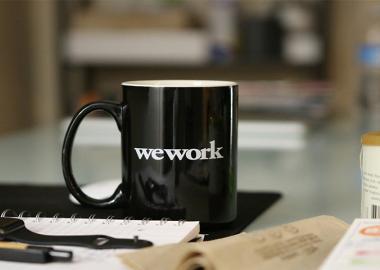The majority of our member groups are run by a committee - a group of enthusiastic people who care about their group and are willing to take responsibility for running it. Even if you don’t have something formally called ‘a committee’ it is likely that you have a group of people who work together to run your group and so the overarching themes in this resource will still be relevant.
Similarly whilst the resource refers to constitutions and charities, if your group is not a charity or does not have a constitution the main themes are still applicable.
This is part two of our resource on committees and will look at committee meetings, communication and getting the work done. Part one sets out the roles and responsibilities of a committee and part three looks at recruitment and problem solving.
Running a committee meeting
Most committees tend to meet between 2 and 6 times a year. Your constitution will tell you the minimum number of times you need to meet. How often you meet will depend on what needs doing, as your priorities and activity will fluctuate depending on how your season is structured.
Often there is a lot that needs to be discussed in a committee meeting, and not enough time to cover everything that needs to be covered. To help facilitate a useful and efficient discussion, bear in mind the following points:
- Always have an agenda for every meeting.
- Prioritise your agenda so that the most important topics are discussed first – then if you run out of time, the less important issues can wait for the next meeting or be discussed via email.
- Don’t let your agenda get too long – only include the things that you really need to discuss together. If something can be solved in a two minute conversation during rehearsal or by email, it is better to take those options rather than try to squeeze it in to an already full agenda.
- Circulate the agenda beforehand, so that committee members can prepare their thoughts in advance of the meeting. If possible, also circulate any papers/reports/accounts that are due to be discussed, and ask your committee members to read through them before the meeting so that you can get straight into the discussion.
- Have a formal process for decision making during meetings – check your constitution which may tell you more about this. Usually decisions are taken on a show of hands, with the chair having a casting vote if the numbers are equal.
- Your secretary should minute every meeting, recording who was present, what was discussed and what decisions were taken. The minutes should highlight the action points to be taken and by whom, and they should be circulated to the committee promptly after the meeting.
- Your chair should facilitate the meeting in an effective manner – seeking clarification in order to help everyone to understand, moving the conversation along when it seems to be stagnating, ensuring that everyone present has a chance to speak if they wish to and verbally confirming any decisions that have been made.
- There will be times when committee discussions become contentious. It is important that all committee members understand that decisions are taken collectively by vote and are final. If you have a potentially contentious decision to make it is a good idea to have all committee members present at the time of voting and give a fair amount of time for discussion. Once the vote has been taken committee members should accept the decision as final. The Charity Commission have further guidance on trustees and decision making.
- Non-committee members can be invited to attend meetings in an advisory capacity – for example your MD may attend to discuss the musical direction of your group. They should not have a vote in any decisions and you might want to think about restricting their attendance to agenda items that are relevant to them.
Committee communication
In many ways the key to a well-run committee is communication. We think there are three keys areas:
- Communication among the committee
- Keeping the membership informed
- Communication with the Music Director/Conductor.
Communication among the committee
It is very likely that your committee will need to meet, speak and make decisions throughout the year outside of committee meetings. There are various ways of doing this – which we have detailed below. With all of them the key is good communication - any major discussions or decisions outside of meetings should be reported back to the committee. Email is useful in this respect as it is quick and simple to use and has a paper trail to help keep records. If you do use email it is a good idea to have a formalised and simple process of how and when things should be reported and how decisions can be made via email.
Ways of working
Committees work in different ways. Exactly how you divide the work, make decisions and get the work done will depend on the tasks and the people. There is no set formula and often a committee will find their own ways of working that are best suited to them. We have listed some common approaches and things to be aware of below.
Delegate to a committee member: delegation is key to committees and the various committee roles offer clear lines of delegation – librarian and music hire, for example. This approach can work very well when there are specific and/or regular tasks that need completing. The wider committee agree and define the budget and parameters for the task and then delegate it to the appropriate committee member to complete it. The committee member can act without the need for further committee consultation or approval. It is important that they do not act beyond their remit and certain checks should be in place to ensure this does not happen (needing two signatures for financial transactions, for example). The committee member should always report their activities to the committee and if they are unsure of something they should consult with the rest of the committee.
Sub committees: it is very common for committees to form sub-committees. This approach can work well when there are several tasks to complete as part of a regular activity (for example concert publicity could have many different aspects to it) or when research needs to be done into a new activity or opportunity. Some common sub committees are: publicity, repertoire, social and touring. You can have permanent sub-committees for ongoing/regular tasks (e.g publicity) or ad hoc ones that are set up for a specific task - such as finding a new MD.
Sub-committees should always be chaired by a committee member and contain at least one other committee member. They can include non-committee members but they should not have a vote or formal decision-making powers. Your constitution may contain information on how sub-committees should be formed - so check before you form any.
As with delegating to committee members it is important that sub-committees have clear parameters, report back to the committee on their activities and seek approval if they want to act outside of their parameters. When a sub-committee has been set up to research a specific task it is usual for the committee to report back with its findings and recommendations for the committee to make a final decision.
Workshops: sometimes a different format to committee and sub-committee can be useful. This approach works well when looking at long term strategy. A short workshop outside of the usual meeting format and physical location in which you met can be a really good way to look at things from a different angle. Workshops can take many forms and you can be quite creative with how they work. It is important to have a clear idea of what you want to get out of the session.
Ask the members: there are certain things you are required to consult members on (e.g. changing governing document). But they can be a good resource on other topics too, and having a way for members to submit ideas for committee discussion can be beneficial. This could be an ongoing process with a comments/suggestion box in rehearsals or it could be asking for thoughts and ideas on a specific topic with a deadline for submission.
Keeping the membership informed
The committee takes decisions and acts on behalf of the wider membership of the group, and is responsible for acting in a fair and transparent manner. Many of the smaller decisions can be taken by the committee on behalf of the group, but big or contentious decisions should be presented to the membership and their approval sought. Sometimes a Special General Meeting (SGM) may need to be called for this to happen.
It is good practice to keep your membership informed of all your committee decisions, so that they do not feel that the committee is elite or aloof from them. The best way to do this is to take 5 minutes at the following rehearsal to summarise any decisions that were made, and take any questions about them. Keeping the members informed can really help build an open and positive culture in your group. It also helps members understand what the committee does to keep the organisation running, shows them that their views are represented and taken into consideration, promotes a free flowing channel of communication and helps with committee recruitment.
The Committee and the Music Director
In our experience this is often the key relationship in a music group, and the one that if not given proper care and attention can cause problems. As a general rule we recommend MDs are not part of the committee but are brought in to advise on specific music issues (see running meetings above). That said all groups are different and sometimes an MD on the committee can work.
Either way the most common tension is between the musical considerations of the MD and the practical and financial considerations of the committee. For example the MD wants to perform a new piece of music but the committee are concerned about the cost of sheet music and that the music won’t pull in an audience. It is fine if the committee and MD have slightly different ambitions and reasoning, as long as they understand each-others point of view and are willing to compromise. An open and honest conversation between the chair and MD at the start of each year is a good way to establish common aims and goals and find some middle ground. It is worth revisiting this conversation throughout the year to make sure you are still on track.
Part 1: responsibilities and roles
Part 3: recruitment and problem solving
We hope you find this Making Music resource useful. If you have any comments or suggestions about the guidance please contact us. Whilst every effort is made to ensure that the content of this guidance is accurate and up to date, Making Music do not warrant, nor accept any liability or responsibility for the completeness or accuracy of the content, or for any loss which may arise from reliance on the information contained in it.










